How to migrate BigCommerce to WooCommerce?
BigCommerce is a hosted platform that powers 49,795 online storefronts and is used by a number of well-known businesses, including Toyota, Kodak, and Ben & Jerry’s. Due to a number of exceptional characteristics, including ease of use, robust built-in features, support, and security.
However, in comparison to WooCommerce, BigCommerce may be less popular in terms of the user base. WooCommerce is well-known for its extraordinary strength, adaptability, and characteristics. Indeed, the number of retailers using WooCommerce continues to grow. As a result, you may find yourself wanting to migrate these two platforms together in order to get accessibility to all of their features.
This article will walk you through the process of How to migrate BigCommerce to WooCommerce?, in the easiest way possible, with the help of LitExtension.
Why should you migrate BigCommerce to WooCommerce?

WooCommerce is maintained by a large global community of developers, which means it is rich in features, continuously expanding, and frequently updated. Additionally, it is built on WordPress, which powers 30% of the world’s websites.
Due to WooCommerce’s widespread support, a plethora of alternatives has been pre-built. Your store will have access to the greatest themes, templates, and plugins from a whole ecosystem. You’ll only need to invest in bespoke development on an ad hoc basis - and only when it provides a significant competitive advantage.
Which Data can be migrated from BigCommerce to WooCommerce?
| Data fields | Data Details |
|---|---|
| Products | Name, SKU, Full Description, Status, Manufacturer. Price, Special Price. Meta Title, Meta Description. Weight. Variants: (SKU, Weight, Price, Special Price, Name). Additional Pictures. Quantity. |
| Product Categories | Name, Description, Meta Description |
| Manufacturers | Name |
| Customers | First Name, Last Name, Email, Billing Address, Shipping Address |
| Orders | Order Date, Order Status, Order Products: (Name, SKU, Option) Product Price, Quantity, Discount Price, Tax Price, Total Price, Shipping Price. Customer Name, Email, Billing Address, Shipping Address. |
| Coupons | Name, Coupon Code, Coupon Date. |
| Reviews | Created Date, Status, Rate, User Name, Comment. |
| Blogs | Title, Full Description, SEO URLs. |
| Blog Posts | Title, Full Description. |
How to migrate BigCommerce to WooCommerce?
Preparation 1: Back up your BigCommerce store data
Ensuring data safety is critical while manually migrating your store from BigCommerce to WooCommerce, since this manipulation procedure can easily distort your data. As a result, your data may be altered and improperly organized in your new store. Please follow the guidelines below carefully if you are manually migrating. Additionally, in the worst-case situation, those who pick the automated tool can perform these actions as well.
Backup Product and Product Images
Go to Products, select Export.
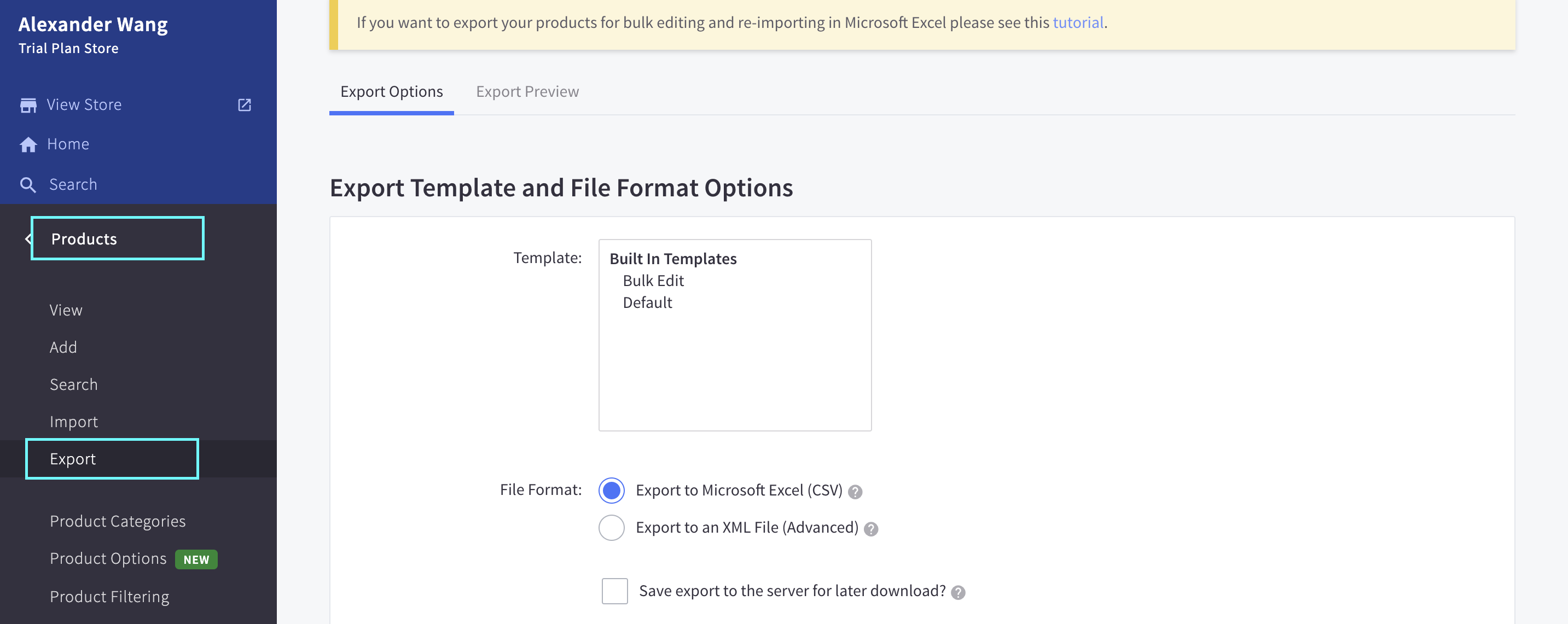
Choose the Bulk Edit.
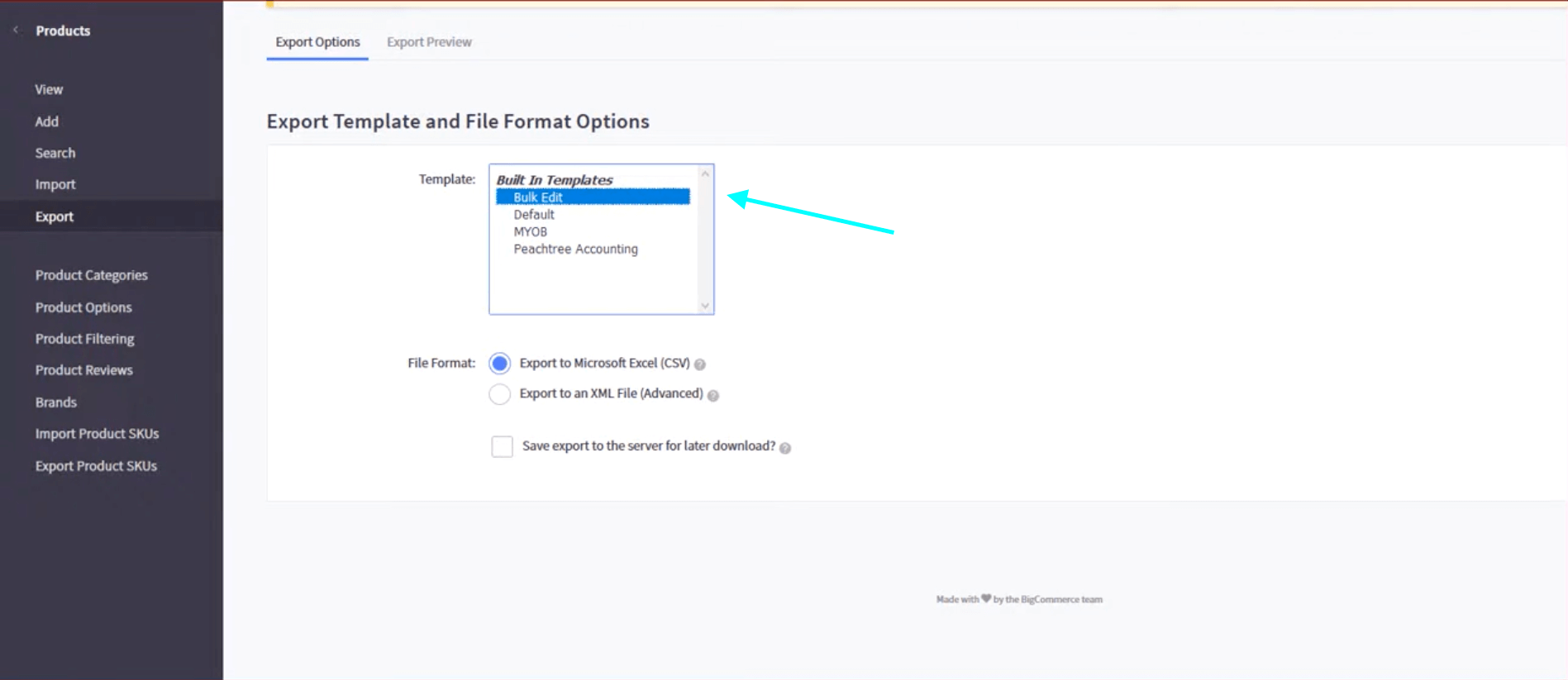
In the popup tab, select Export my Products to a CSV file.
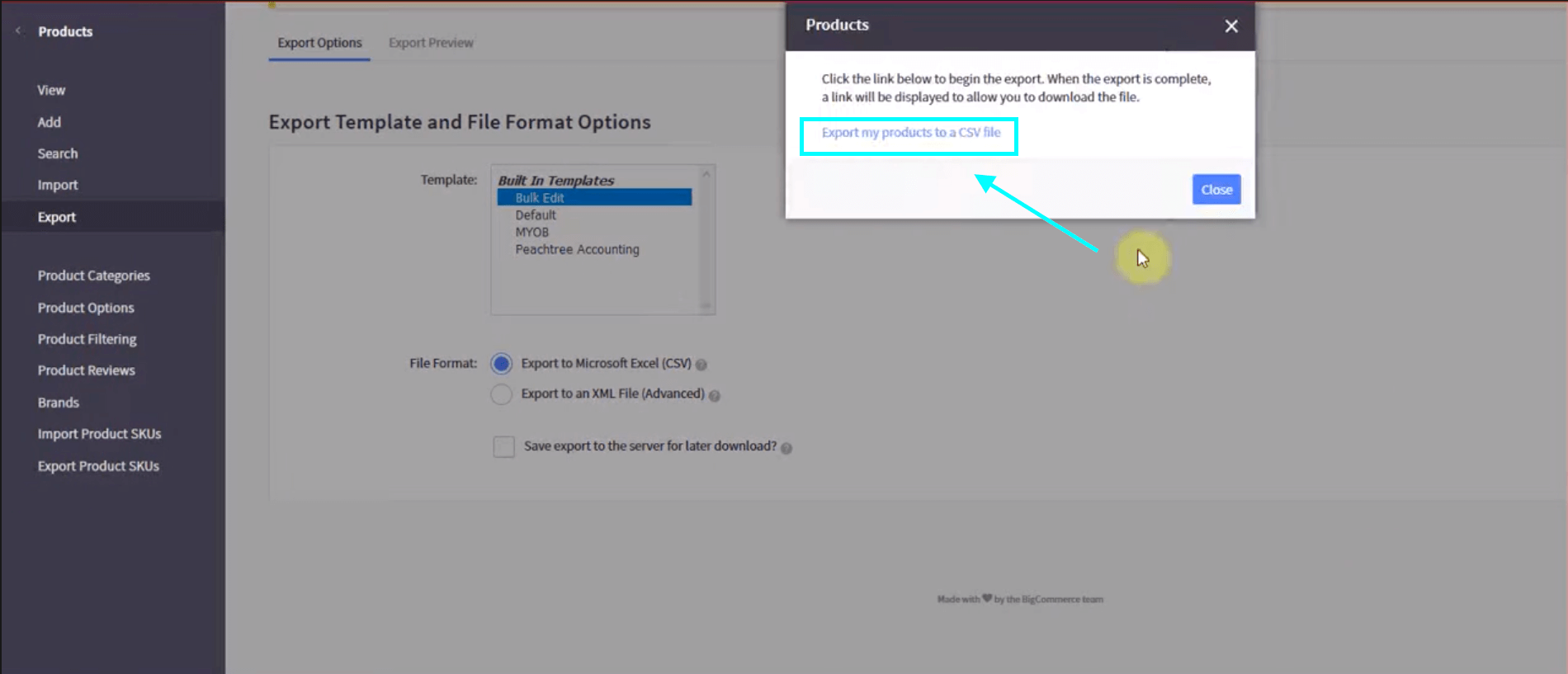
When the exporting process is done, click Download my Products file.

Backup Customer data
Go to Customers, select Export.

Repeat the following steps like for backing up Product and Product Image.
Backup Order Data
Go to Order, select Export.

Repeat the following steps like for backing up Product and Product Image.
Preparation 2: Build your WooCommerce store

Step 1: Get your BigCommerce API.
Go to Advanced Setting.
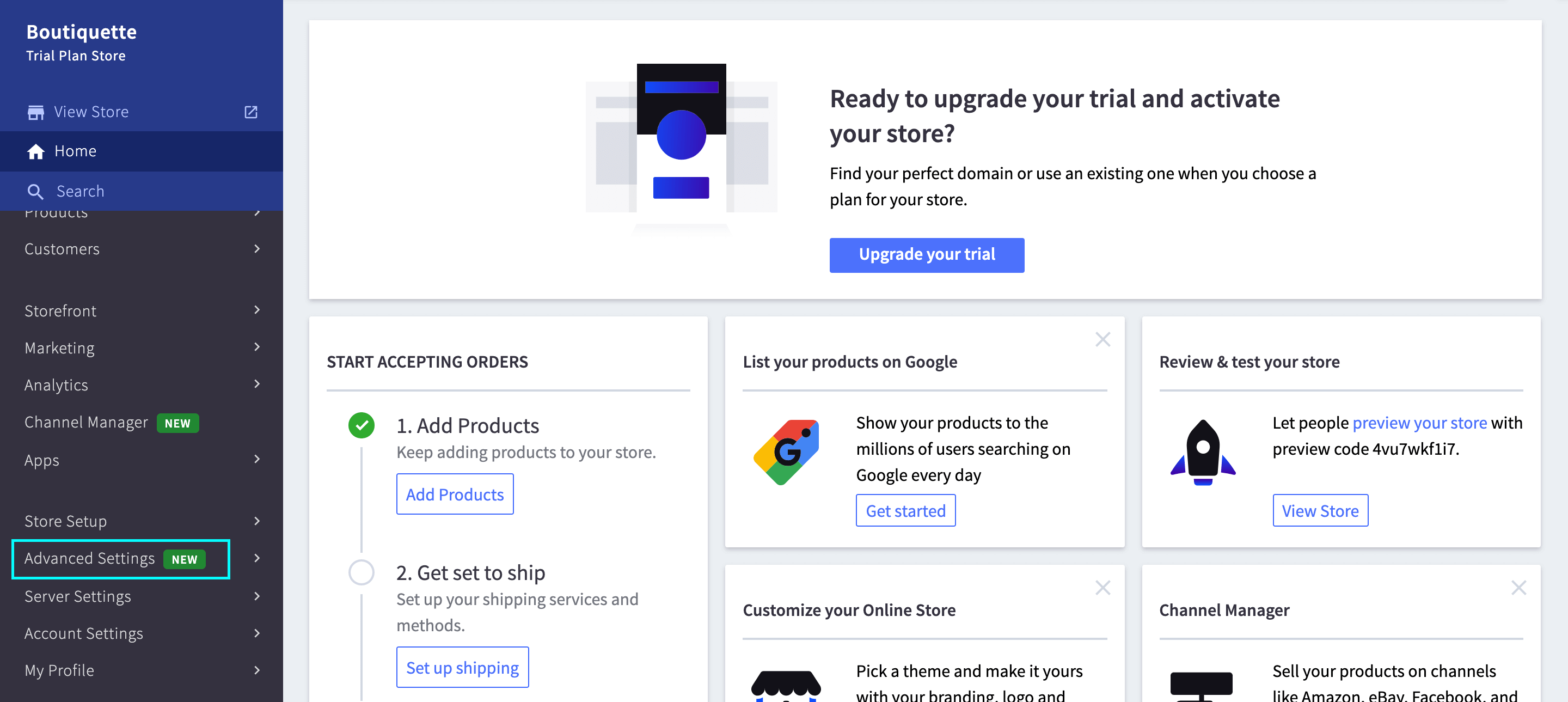
Choose API Account.

Click on Create API Account, choose Create V2/V3 API Token.

Fill in the information, change all the statuses to Modify. Click on Save when finished.

On the popup tab, select Done.
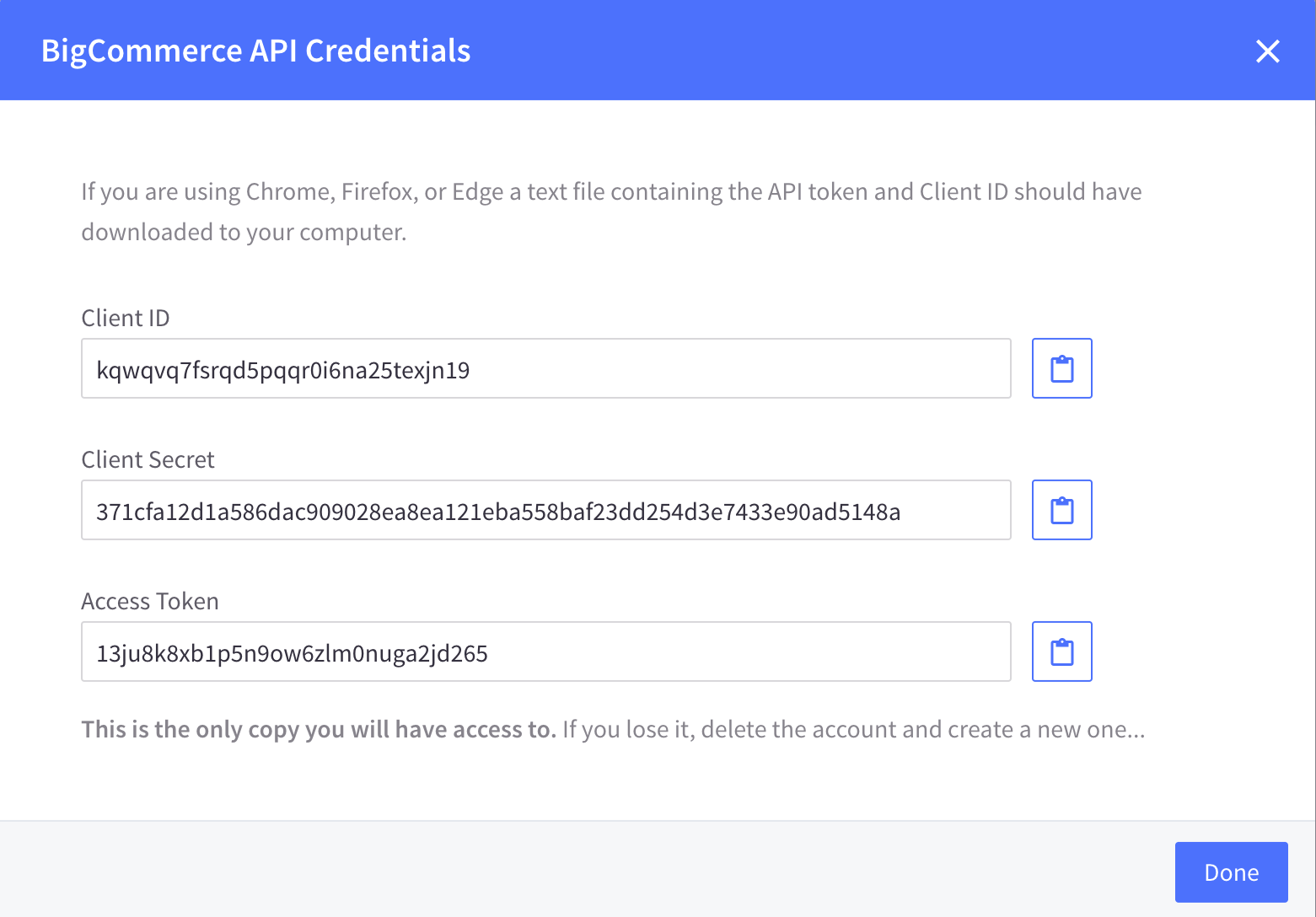
Step 2: Install the LitExtension connector.
LitExtension acts as an access gateway, facilitating the connection of your shopping carts. It’s as simple as downloading the connector, extracting it, and uploading it to the root folder. If you have any difficulties during the connection installation procedure, please contact the LitExtension support staff.
Step 3: Enter the Setup information.
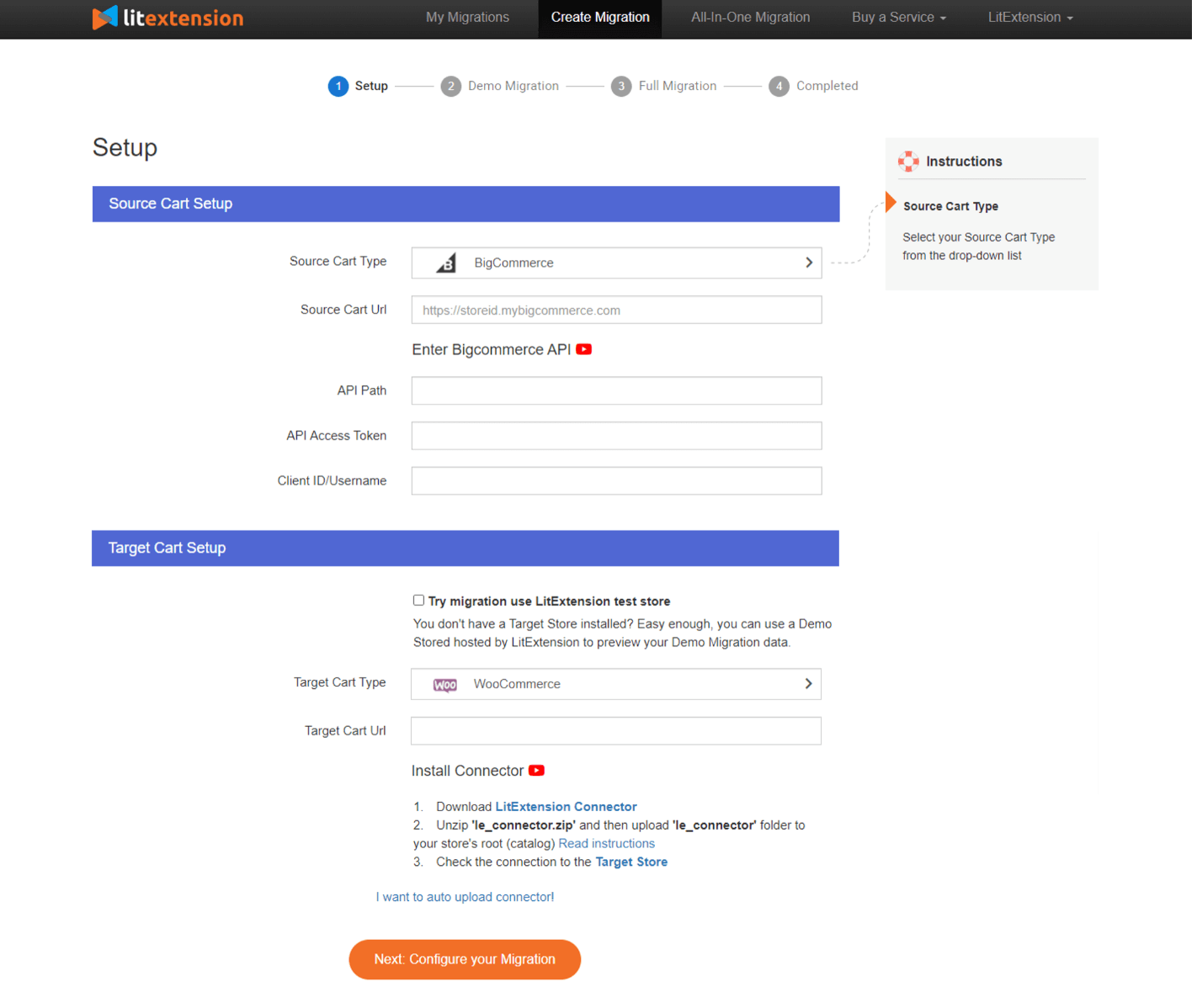
Step 4: Choose entities to migrate from BigCommerce to WooCommerce.
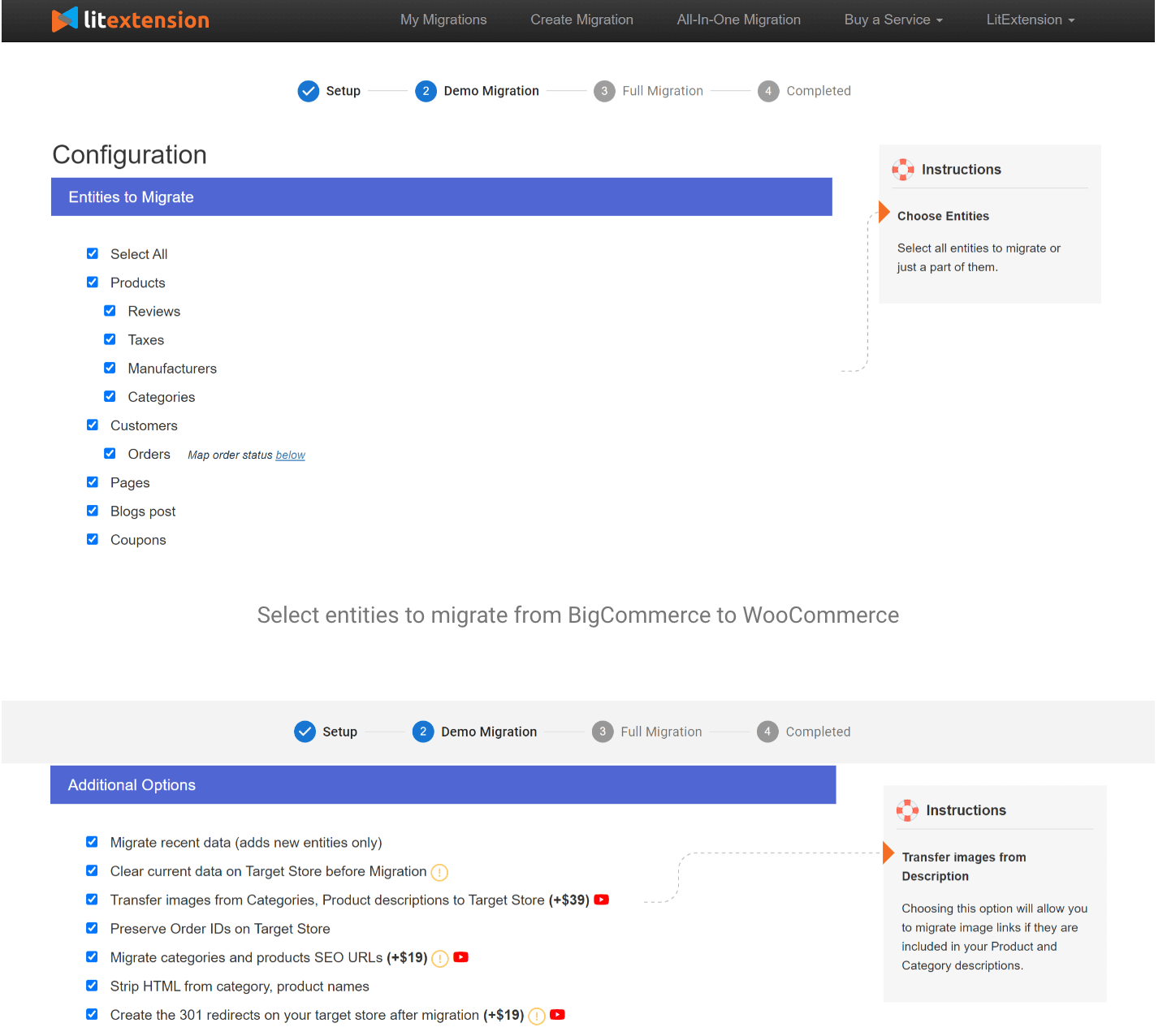
Step 5: Start the migration.
Before executing a full migration, you may use the Free Demo migration to familiarize yourself with the procedure and visualize your migration. Nonetheless, this process may take a few moments.
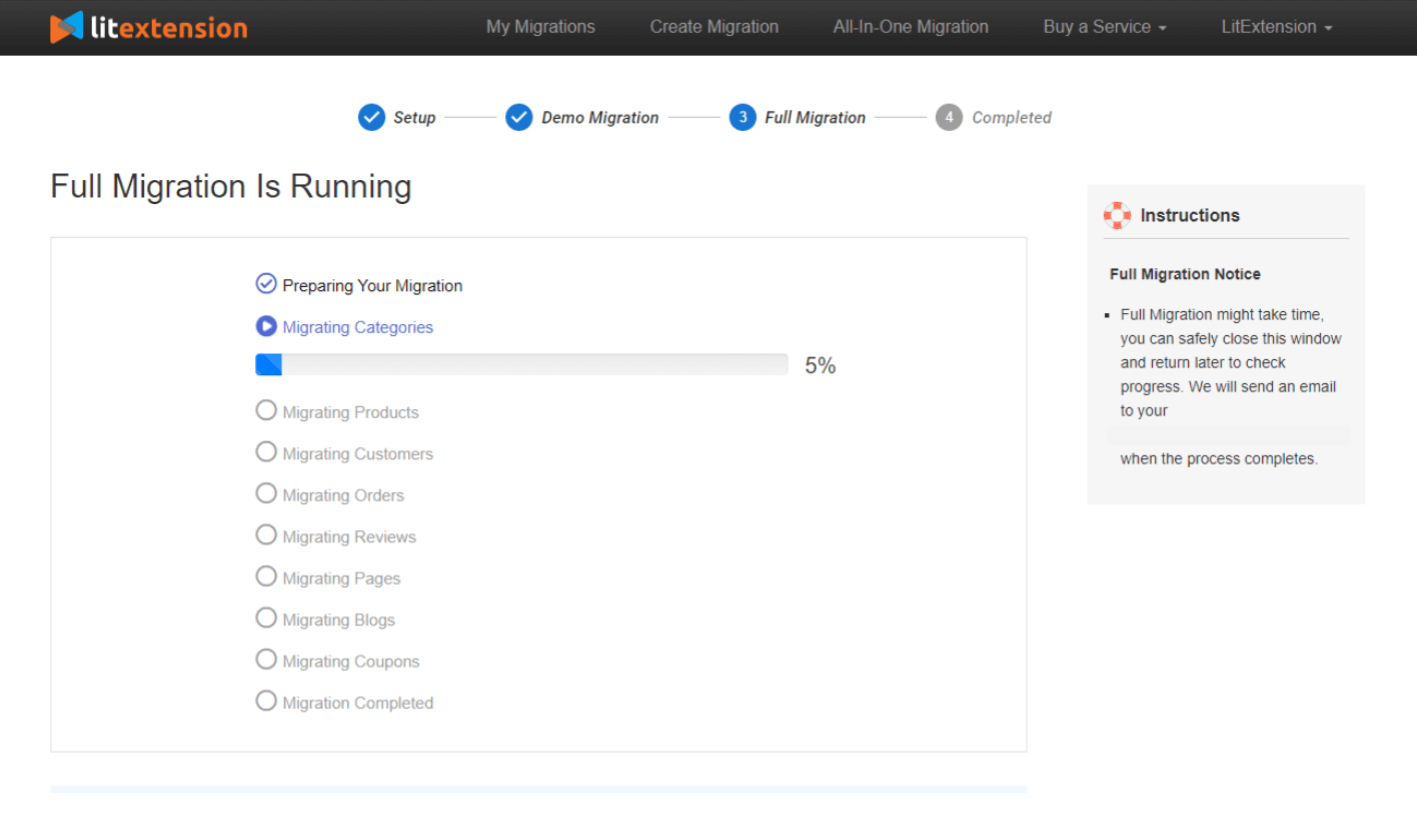
Alternatively, you may skip this step and proceed with the whole migration. For your convenience, the screen will display the BigCommerce to WooCommerce transfer procedure.
However, there is no need to be concerned about its completion. Because LitExtension is a cloud-based technology, the migration will continue even if you switch off your computer. You will receive an email confirming the migration’s completion.
Step 6: Double check the migration result.
Now, it is critical to check the migration outcome. You must input the URL of your new store or click the confirmation link in the email to access your shop’s website.
After that, go into your WordPress admin dashboard and navigate to the WooCommerce tab to access your back-end data.
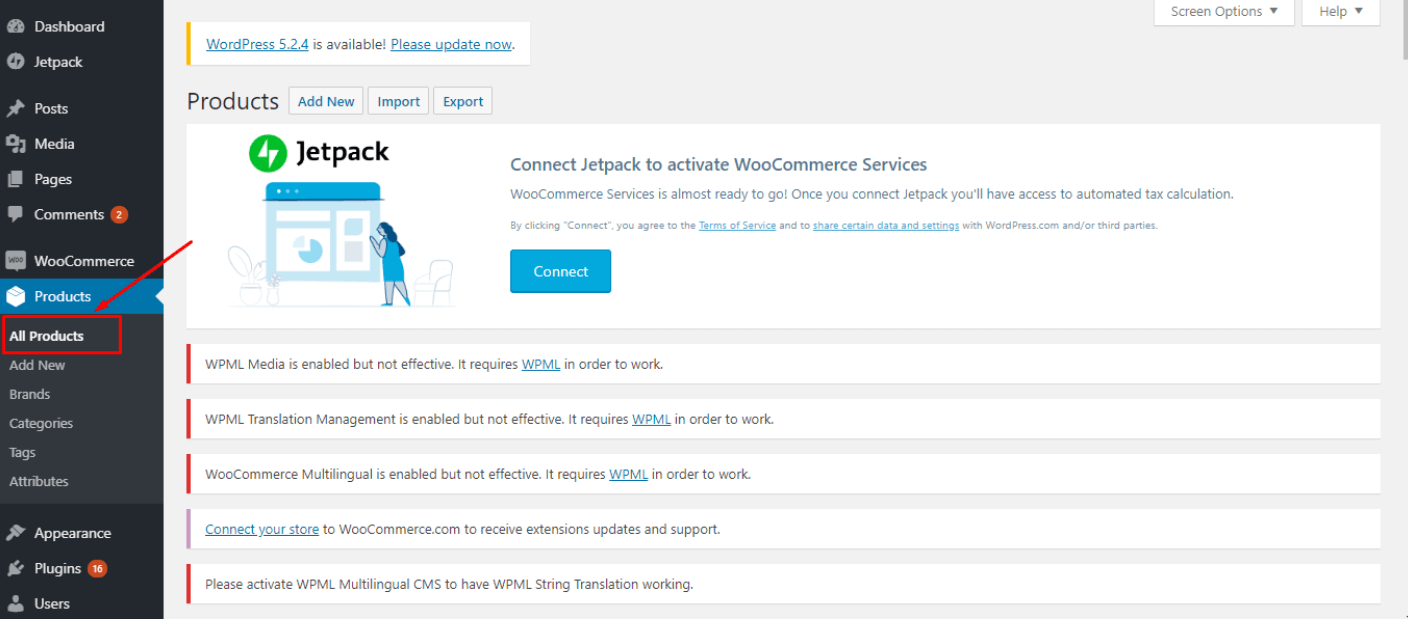
Go to WooCommerce, Choose Status, then Tools, and select Regenerate.
Click on Product lookup tables, select Regenerate.

Step 7: Fulfill some post-migration tasks.
To prepare your business for operation, we propose the following post-migration steps:
- Install new themes.
- Include a new extension.
- Recent migrations of data.
- Alternate DNS and change domain.
Conclusion
To summarize, WooCommerce is able to support BigCommerce in three key areas: operating costs, themes and customization, and applications and plugins. All of these factors contribute to merchants migrating from BigCommerce to WooCommerce in order to run their business on a more comprehensive platform at a cheaper cost.
We hope that our article helps you streamline the process of Migrating BigCommerce to WooCommerce, as well as enjoy all the benefits after integrating the two platforms. Do you find this article useful? If you do, please share our work with your friends and colleagues because Sharing is caring.





